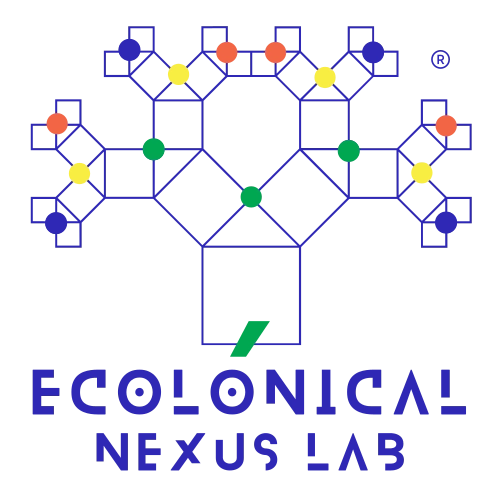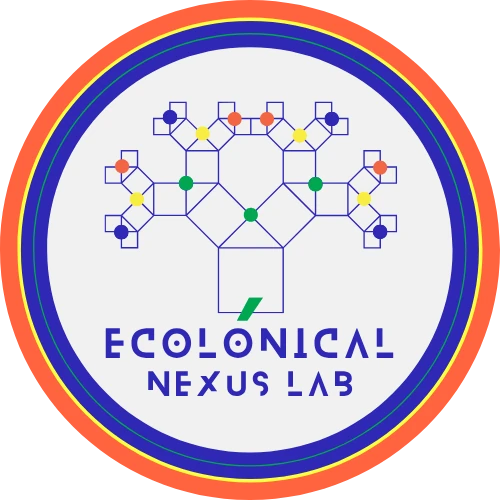No products in the cart.

AI for Biodiversity: Progress or Ethical Dilemma?
AI for Biodiversity is often portrayed as a groundbreaking solution for conservation, offering tools to monitor ecosystems, track species, and process complex ecological data. However, its rapid adoption raises critical questions: Is this technology truly necessary, or is it being driven by corporate agendas and a desire for technological prestige? As AI becomes embedded in conservation efforts, it is vital to evaluate whether its benefits align with the needs of ecosystems and communities, or if it risks prioritizing market-driven goals over genuine ecological solutions. This article critically explores how AI for Biodiversity is reshaping conservation practices, the ethical concerns it raises, and whether its deployment is guided by necessity or by the allure of innovation.
Contents
- AI for Biodiversity: Promise or Illusion?
- Challenges in AI for Biodiversity
- Genetic Editing: Opportunity or Pandora’s Box?
- Discussions
- References
- Further Reading: Independent Resources on AI for Biodiversity & Conservation
- Frequently Asked Questions
- How is AI applied in biodiversity conservation?
- Is AI the best solution for biodiversity protection, or do alternative methods offer greater resilience?
- What are the risks of using AI in conservation?
- What are the non-technological alternatives to AI in biodiversity conservation?
- What is synthetic biology, and how does it impact biodiversity?
- What are the key risks of synthetic biology in conservation?
- Can AI and synthetic biology be misused in conservation?
- What are the concerns regarding genetic sequence databases?
- How do patents and monopolization impact biodiversity research?
- How can governance frameworks ensure responsible AI use in biodiversity conservation?
- Author
AI for Biodiversity: Promise or Illusion?
AI for Biodiversity has undeniably revolutionized conservation practices, offering tools that range from processing vast amounts of ecological data to automating species identification in remote camera trap images. These AI technologies have enabled researchers to tackle previously insurmountable tasks with remarkable efficiency. For instance, machine learning algorithms can now analyze terabytes of audio data to detect the calls of rare species, significantly accelerating protection efforts. Yet, while these advancements are celebrated, it is critical to ask: Are these tools truly driving equitable progress in conservation, or are they reinforcing deeper systemic issues that often go unaddressed?
Remote sensing and AI-powered drones have similarly transformed habitat monitoring. These technologies can capture real-time images of ecosystems and rapidly identify illegal activities, such as poaching or deforestation. In theory, this capability enhances responsiveness and prevention. However, the reality is more nuanced. Is this rapid technological shift inadvertently excluding marginalized regions and communities that lack access to such resources? Furthermore, are conservation initiatives becoming overly dependent on AI for Biodiversity, sidelining traditional, community-driven approaches that have long proven effective?
A deeper reflection reveals that the promise of AI for Biodiversity often obscures critical questions about its broader impact. For example, does the heavy reliance on AI solutions prioritize innovation over necessity? In many cases, the allure of cutting-edge technology seems to overshadow fundamental conservation needs, such as addressing habitat loss or fostering local stewardship. Are we relying on AI for Biodiversity because it offers genuine solutions, or because it satisfies the demand for technological prestige and corporate interests?
Moreover, the logistical and financial barriers associated with implementing AI for Biodiversity cannot be ignored. Training models and deploying AI-powered tools require significant investments in infrastructure, skilled personnel, and data access—resources that are unevenly distributed across regions. This raises the question: Are these technologies widening the gap between well-funded conservation programs and those in resource-constrained areas? If AI for Biodiversity becomes a tool accessible only to affluent organizations and nations, its role in global conservation efforts may inadvertently perpetuate inequality rather than mitigate it.
Finally, there is a need to question the implications of this technological shift on the broader conservation narrative. Does the integration of AI for Biodiversity risk framing conservation success in purely technological terms, neglecting the ecological and social complexities that demand equally nuanced solutions? By focusing on what AI can do, are we overlooking what it perhaps should not be doing? These questions are crucial to ensure that the use of AI for Biodiversity remains a means to an end, rather than an end in itself.
Challenges in AI for Biodiversity
The power of AI for Biodiversity lies in its ability to process and analyze vast amounts of data, yet the disparities in data availability reveal significant challenges. High-resolution satellite imagery, ecological sensor data, and other datasets are crucial for training AI models to identify patterns and make accurate predictions. However, access to these resources is often uneven. Well-funded regions and organizations with advanced infrastructure enjoy abundant datasets, while underserved areas, often home to some of the world’s most critical ecosystems, remain excluded. This imbalance raises a fundamental question: Are we unintentionally prioritizing ecosystems that align with economic or geopolitical interests, rather than those most in need of conservation?
Data ownership and accessibility further complicate the landscape. Many datasets are restricted by national policies, proprietary platforms, or competitive interests among stakeholders. While protecting sensitive information is essential, these restrictions can stifle collaboration and innovation. How can we strike a balance between safeguarding ecological data and fostering a global exchange of knowledge? Without equitable data-sharing frameworks, AI for Biodiversity risks becoming a privilege accessible only to a select few, undermining its potential as a tool for collective ecological stewardship.
Moreover, the reliance on proprietary data and technologies introduces an additional ethical layer. Much of the technology driving AI for Biodiversity is developed by private companies that maintain control over the tools and data they provide. This dependency creates vulnerabilities. What happens if access to these tools is revoked due to financial constraints, geopolitical tensions, or shifting corporate priorities? Are we building conservation frameworks that are too dependent on commercial interests, potentially compromising the long-term sustainability and inclusivity of these efforts?
The issue of data quality also looms large. While AI models are powerful, their outputs are only as good as the data they are trained on. Biases in datasets—whether due to regional overrepresentation, outdated methodologies, or incomplete records—can lead to skewed insights. For instance, models trained predominantly on data from temperate regions may struggle to interpret patterns in tropical ecosystems, where biodiversity is often more complex and poorly documented. This raises an important question: Are conservation priorities being misdirected by incomplete or biased datasets, potentially overlooking critical areas that require immediate attention?
Finally, the integration of AI for Biodiversity must grapple with the social and financial barriers that limit its adoption in many regions. Training and deploying AI technologies require significant investments in infrastructure, technical expertise, and ongoing maintenance. In resource-constrained regions, these barriers can hinder the adoption of AI, creating a divide between those who can leverage these tools and those who cannot. How can we ensure that the benefits of AI for Biodiversity are distributed equitably, rather than reinforcing existing inequalities in global conservation efforts?
These challenges underscore the need for a more inclusive and reflective approach to the deployment of AI for Biodiversity. By addressing disparities in data access, fostering collaborative frameworks, and prioritizing the needs of underrepresented ecosystems, we can ensure that AI serves as a tool for collective ecological good rather than a mechanism that perpetuates inequality. However, achieving this balance requires a commitment to equity, transparency, and long-term sustainability—values that must underpin the future of AI-driven conservation efforts.
Genetic Editing: Opportunity or Pandora’s Box?
As AI for Biodiversity continues to evolve, its integration with genetic editing technologies such as CRISPR opens unprecedented possibilities in conservation science. These tools promise revolutionary outcomes: reviving extinct species, engineering crops resilient to climate change, or eliminating invasive species threatening native ecosystems. Yet, such possibilities are not without profound risks. The question remains: Are we embracing genetic editing as a necessary tool for biodiversity, or are we succumbing to a fascination with innovation without fully understanding its implications?
While genetic editing offers exciting opportunities, it introduces a new layer of complexity to conservation. The ability to manipulate the genetic code of living organisms raises scientific, ecological, and ethical dilemmas that demand rigorous scrutiny. Are we genuinely prepared to navigate these complexities, or are we rushing forward with a technology whose consequences could ripple far beyond our control?
1. Unintended Ecological Consequences
The natural world operates within intricate and often fragile ecological balances. Genetic interventions, no matter how well-intentioned, could disrupt these systems in ways that are difficult to predict. For instance, modifying the traits of a predator to control its population might inadvertently destabilize food webs, causing ripple effects that harm other species and ecosystems. Are current testing protocols robust enough to anticipate these cascading ecological impacts, or are we prioritizing short-term fixes over long-term stability?
Moreover, once a genetic intervention is introduced, reversing its effects may be impossible. How do we mitigate the risks of unintended consequences, especially in ecosystems already under pressure from climate change and human activity? Without thorough, multidisciplinary evaluations, the use of genetic editing could create more problems than it solves.
2. Ethical Ownership of Life
The question of who has the authority to alter the genetic code of living organisms is as much ethical as it is scientific. Indigenous or local communities, often the stewards of the biodiversity targeted by genetic editing, are frequently excluded from decision-making processes. This exclusion raises pressing concerns about biopiracy and exploitation: Are we protecting biodiversity, or are we appropriating it for the benefit of corporate or institutional agendas?
Furthermore, genetic editing challenges the very notion of what it means to “own” life. When organisms are modified, do they become the intellectual property of the entities that altered them? What are the implications for the communities and ecosystems that depend on these organisms? The lack of clear guidelines and ethical frameworks exacerbates these concerns, highlighting the need for inclusive governance that respects local knowledge and cultural values.
3. Risk of Weaponization
While genetic editing technologies are largely developed for conservation and medical purposes, their potential for misuse cannot be ignored. In the wrong hands, these tools could be weaponized to create invasive species, disrupt ecosystems, or manipulate natural resources for political or economic gain. Such scenarios may seem unlikely, but history has shown that technological advancements often outpace the regulations meant to control them.
Are global safeguards and governance frameworks sufficient to prevent such misuse? The potential for weaponization underscores the urgency of establishing transparent international agreements and oversight mechanisms to ensure that genetic editing serves conservation goals without opening new vulnerabilities.
4. Dependency on Technological Solutions
An often-overlooked challenge of genetic editing is the potential for overreliance on technological fixes. While these tools offer promising solutions, they cannot replace the foundational work of preserving habitats, addressing overexploitation, and promoting sustainable practices. Are we at risk of viewing genetic editing as a silver bullet, sidelining the more holistic approaches required for long-term biodiversity protection?
This dependency also risks diverting attention and funding away from community-led conservation efforts that prioritize ecological harmony and resilience. By placing genetic editing at the center of biodiversity strategies, are we inadvertently marginalizing the very communities and practices that have protected ecosystems for generations?
5. The Illusion of Control
Genetic editing represents humanity’s attempt to exert control over nature, but it also exposes the limits of that control. Nature is dynamic, interconnected, and inherently unpredictable. Modifying the genetic code of one species may yield outcomes far beyond our current understanding, challenging the idea that we can predict and manage the consequences. Are we prepared to accept the potential for unintended outcomes, or are we underestimating the complexity of the natural systems we seek to influence?
Genetic editing, coupled with AI for Biodiversity, opens new frontiers in conservation but introduces profound risks. Technologies like CRISPR promise to revive extinct species or eliminate invasive ones, yet they could destabilize ecosystems and raise questions about the ethical ownership of genetic resources. How can these tools be regulated to avoid ecological and social harm?
Discussions
Ethics and Indigenous or Local Rights
The introduction of AI in conservation raises fundamental questions about respect for indigenous and local communities’ rights. Tools such as drones and camera traps have proven useful for environmental monitoring, but what are the implications of implementing these technologies without proper consent from the populations living in these territories?
Beyond technological efficiency, should we first consider whether these tools are necessary in these contexts? Is there a risk that, rather than strengthening local ecological knowledge, AI perpetuates exclusion under the pretext of conservation?
Policy in AI for Biodiversity
Current conservation policies rarely address the dilemmas associated with AI and genetic editing in a proactive manner. Instead of asking how to integrate them ethically, a more fundamental question is: Should their integration be allowed at all?
Are these technologies truly necessary, or do they reflect a tendency to rely on automated solutions rather than addressing the root causes of environmental degradation? If ecological systems have survived for millions of years without artificial intervention, what justification exists for modifying species or ecosystems using AI and genetic editing?
Funding in conservation is another critical issue. Diverting resources toward technological development may reduce support for traditional solutions such as habitat restoration and community-led governance. Should we prioritize advanced technologies when conventional strategies have yet to be fully implemented or funded?
Progress with Precautions
It is often argued that AI and genetic editing can contribute to conservation, but this assumes that technological intervention is inherently beneficial. Is this a valid premise?
The core issue is not just how we apply these tools, but whether we should use them in the first place. Can we justify genetic manipulation of species based on potential benefits when ecosystems have demonstrated resilience without artificial intervention? How do we prevent these technologies from generating new ecological imbalances rather than solving existing ones?
Genetic editing of species presents challenges that are difficult to predict: What happens if a modified organism becomes dominant and disrupts entire food chains? How do we manage long-term effects in complex ecosystems when biology is not fully predictable? And if these developments are driven by private interests, is there a real guarantee that their application prioritizes biodiversity rather than profit?
AI in conservation presents similar concerns. While it can improve species monitoring, it relies on data that may be biased, leading to inaccurate ecological interpretations. How can we ensure these tools are reliable and not just a way to externalize decision-making to algorithms without human responsibility?
The geopolitical aspect is another challenge. AI and genetic editing are developed by entities with economic and technological power, which may exclude less privileged regions from accessing conservation tools. Are we building a conservation model dependent on elite technology, or should we focus on decentralized and accessible solutions?
The Fundamental Question: Is AI and Genetic Editing Truly Necessary for Conservation?
Many threats to biodiversity—deforestation, resource overexploitation, pollution—stem from human decisions and unsustainable economic models. Shouldn’t we prioritize solutions based on environmental regulations, ecological restoration, and changes in consumption patterns before turning to technologies that could introduce additional risks?
Beyond how these tools are used, does it make sense to rely on AI and genetic editing to solve problems that were created by human systems? If technology has largely contributed to the current ecological crisis, why should we assume it is the best solution to reverse it?
The future of conservation will not be determined solely by innovation but by a critical assessment of what truly protects biodiversity. Rather than assuming that AI and genetic editing must be integrated, it is essential to ask whether their use is justifiable and, ultimately, whether conservation needs more technology or more human commitment.
References
Further Reading: Independent Resources on AI for Biodiversity & Conservation
Explore our curated selection of independent resources on AI, biodiversity conservation, and open data. These platforms emphasize transparency, community-driven research, and ethical innovation in ecological science.
Independent AI & Ethics Readings
- Research Articles on AI Ethics – Peer-reviewed studies on Ethics & AI.
Open Biodiversity & AI Data
- OpenBiodiv – A decentralized biodiversity knowledge graph for AI applications.
- Ecological Data Hub – Open ecological datasets for independent research.
AI for Grassroots Conservation
- Earth Defenders – Community-led conservation with AI.
- WildMe – Open-source AI tools for species tracking & biodiversity monitoring.
Frequently Asked Questions
How is AI applied in biodiversity conservation?
AI is leveraged in conservation for tasks such as image recognition in camera traps, habitat monitoring through satellite imagery, bioacoustic analysis for species identification, and the detection of illegal activities such as poaching. While these technologies offer substantial benefits, ethical concerns regarding data governance, algorithmic bias, and long-term ecological impact require careful oversight.
Is AI the best solution for biodiversity protection, or do alternative methods offer greater resilience?
AI is a tool that enhances conservation strategies, but it is not a standalone solution. Effective biodiversity protection relies on a combination of scientific research, ecological stewardship, policy interventions, and traditional ecological knowledge. Community-led conservation efforts, legal protections, and sustainable land-use practices often yield more resilient and adaptive conservation outcomes.
What are the risks of using AI in conservation?
Potential risks include algorithmic bias, lack of transparency in AI models, over-reliance on technology at the expense of local knowledge, high implementation costs limiting accessibility, and ethical concerns regarding data privacy. Furthermore, centralized control over AI-driven conservation efforts may marginalize local communities and limit biodiversity governance to corporate or institutional interests.
What are the non-technological alternatives to AI in biodiversity conservation?
Non-technological conservation strategies include ecosystem restoration, community-led land stewardship, local & indigenous biodiversity management, legal frameworks for habitat protection, and agroecological practices. These methods emphasize ecological resilience, traditional knowledge systems, and long-term sustainability without dependence on AI-based interventions.
What is synthetic biology, and how does it impact biodiversity?
Synthetic biology involves the engineering of biological systems, often with AI assistance, to create or modify organisms for various applications. While this technology holds potential for biodiversity conservation—such as genetic rescue and ecosystem restoration—it also raises ethical concerns regarding ecological disruption, genetic homogenization, and the unforeseen consequences of altering natural species.
What are the key risks of synthetic biology in conservation?
Risks include unintended ecological consequences, reduced genetic diversity, dependency on biotech corporations for biodiversity solutions, and ethical dilemmas surrounding genetic modification. Without strict regulatory oversight, synthetic organisms could destabilize ecosystems rather than support conservation efforts.
Can AI and synthetic biology be misused in conservation?
Yes, these technologies could be misused for commercial gain, biopiracy, or the development of invasive species with unpredictable consequences. Ethical oversight and public transparency are essential to ensure that AI and synthetic biology serve conservation interests rather than corporate or geopolitical agendas.
What are the concerns regarding genetic sequence databases?
Genetic sequence databases raise concerns about data ownership, biopiracy, and commercial exploitation. Many databases lack clear regulations on who controls access, creating risks for the misappropriation of genetic information from local and biodiversity-rich regions.
How do patents and monopolization impact biodiversity research?
The patenting of genetic resources can restrict access to biodiversity data, limiting independent research and conservation initiatives. Corporate control over AI-driven biodiversity tools may shift priorities from ecological sustainability to profit-driven agendas, reducing equitable access to essential knowledge.
How can governance frameworks ensure responsible AI use in biodiversity conservation?
Governance frameworks should establish guidelines on ethical AI use, biodiversity data protection, and equitable technology access. Collaborative decision-making with indigenous & local communities, conservationists, and policymakers is essential to prevent AI-driven centralization and exploitation of biodiversity data.
Author
-

Milena-Jael Silva-Morales is a systems engineer with a PhD in Urban and Territorial Systems and the founder of Ecolonical LAB, an independent research lab integrating data science, AI, and territorial systems to address local and global sustainability challenges. With over 15 years of experience leading international, multidisciplinary R&D initiatives, she is recognized for bridging science, technology, and policy to deliver transformative solutions in water, energy, and biodiversity systems.
View all posts
This article is governed by the Ecolonical Open Knowledge License (EOKL Lite V1). This license explicitly prohibits the use of its contents for AI model training, dataset integration, algorithmic processing, or automated decision-making systems. Unauthorized computational aggregation, reproduction beyond permitted terms, and any use conflicting with open knowledge principles are strictly restricted.
For legally binding terms, compliance obligations, and permitted exceptions, refer to the License Usage Policy.
Under specific conditions, this content aligns with the Creative Commons Attribution-NonCommercial-ShareAlike 4.0 International License. However, any AI-related processing, direct commercial exploitation, or automated derivative work remains subject to EOKL Lite V1 restrictions.








Leave a Reply